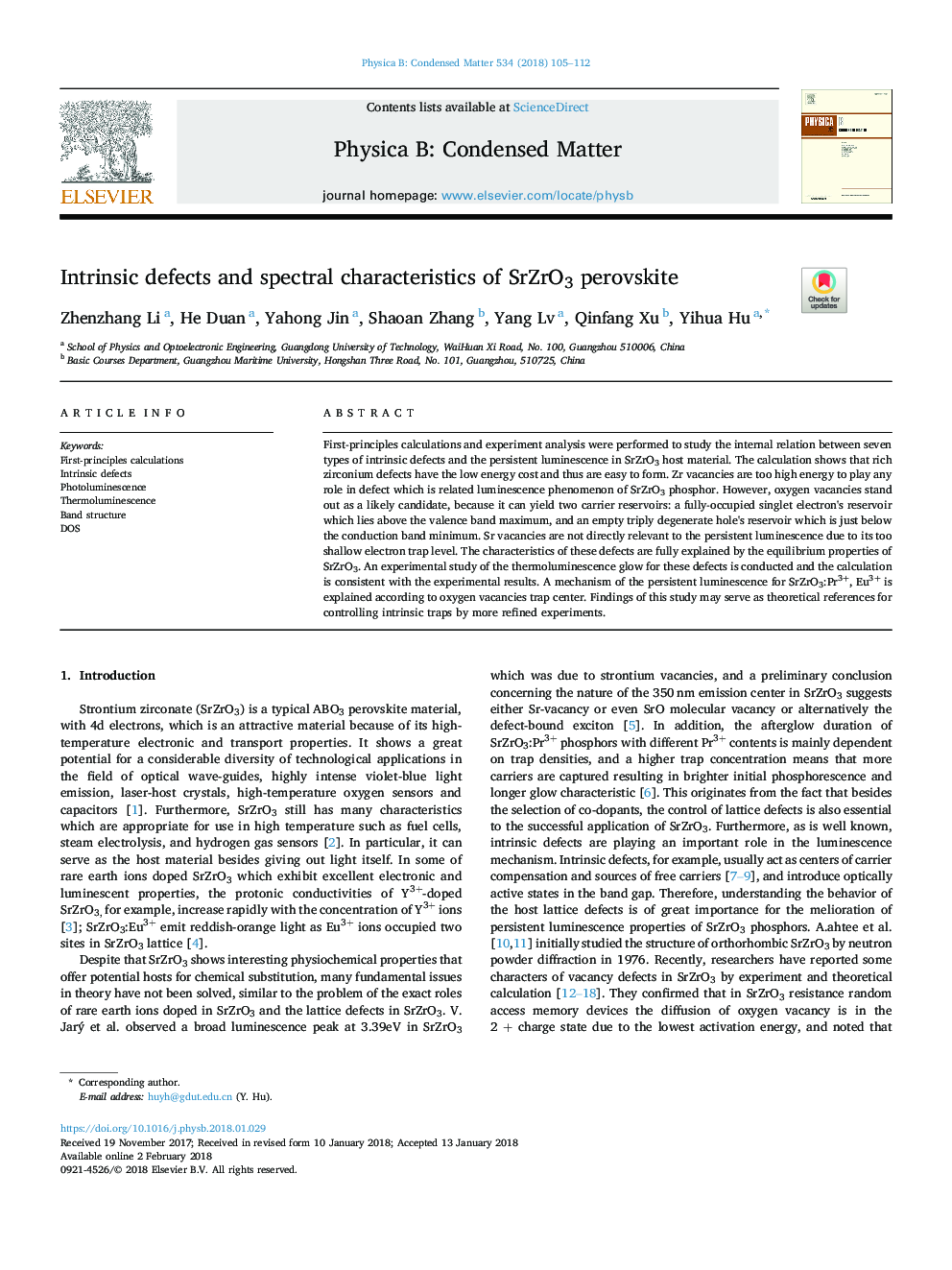| Article ID | Journal | Published Year | Pages | File Type |
|---|---|---|---|---|
| 8161187 | Physica B: Condensed Matter | 2018 | 8 Pages |
Abstract
First-principles calculations and experiment analysis were performed to study the internal relation between seven types of intrinsic defects and the persistent luminescence in SrZrO3 host material. The calculation shows that rich zirconium defects have the low energy cost and thus are easy to form. Zr vacancies are too high energy to play any role in defect which is related luminescence phenomenon of SrZrO3 phosphor. However, oxygen vacancies stand out as a likely candidate, because it can yield two carrier reservoirs: a fully-occupied singlet electron's reservoir which lies above the valence band maximum, and an empty triply degenerate hole's reservoir which is just below the conduction band minimum. Sr vacancies are not directly relevant to the persistent luminescence due to its too shallow electron trap level. The characteristics of these defects are fully explained by the equilibrium properties of SrZrO3. An experimental study of the thermoluminescence glow for these defects is conducted and the calculation is consistent with the experimental results. A mechanism of the persistent luminescence for SrZrO3:Pr3+, Eu3+ is explained according to oxygen vacancies trap center. Findings of this study may serve as theoretical references for controlling intrinsic traps by more refined experiments.
Keywords
Related Topics
Physical Sciences and Engineering
Physics and Astronomy
Condensed Matter Physics
Authors
Zhenzhang Li, He Duan, Yahong Jin, Shaoan Zhang, Yang Lv, Qinfang Xu, Yihua Hu,
